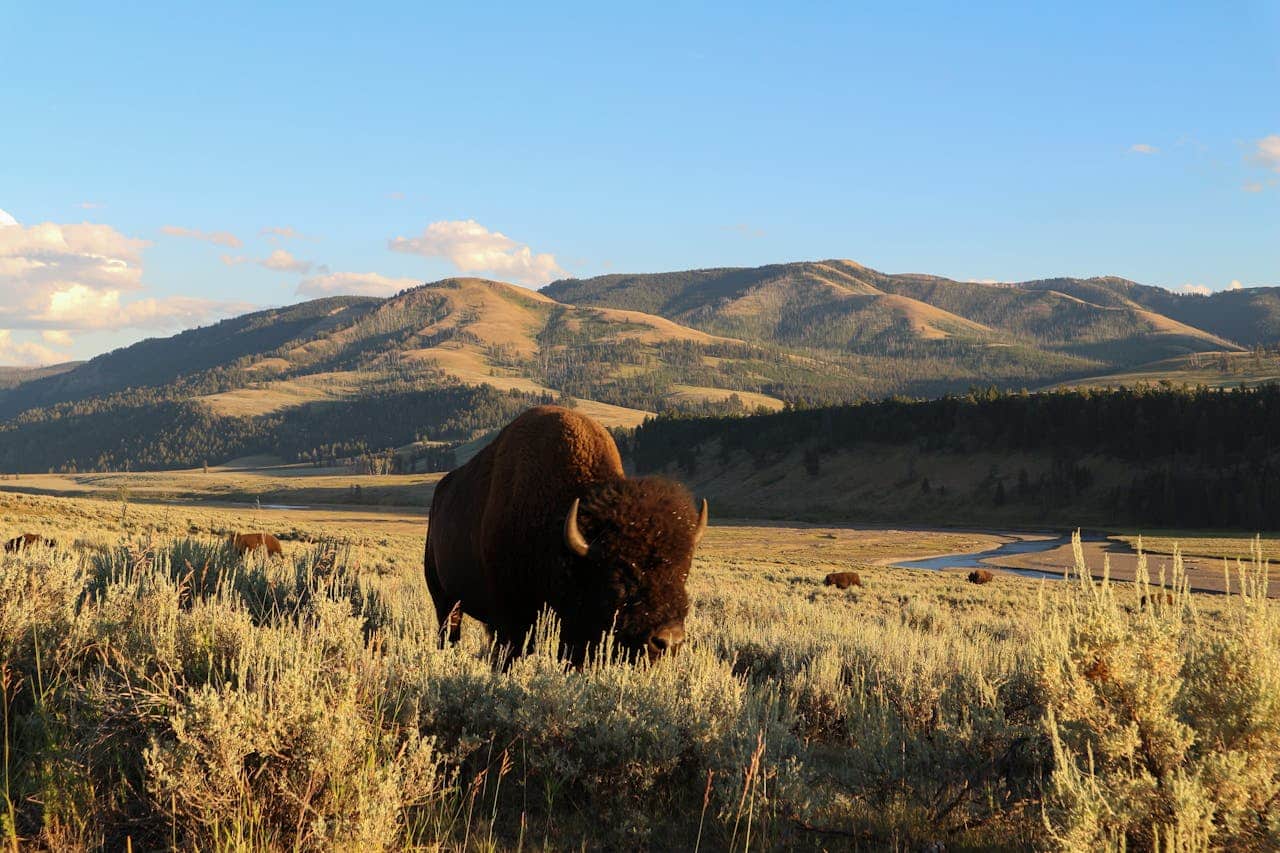
Embark on your night hiking adventure with confidence and safety by keeping these essential tips in mind:
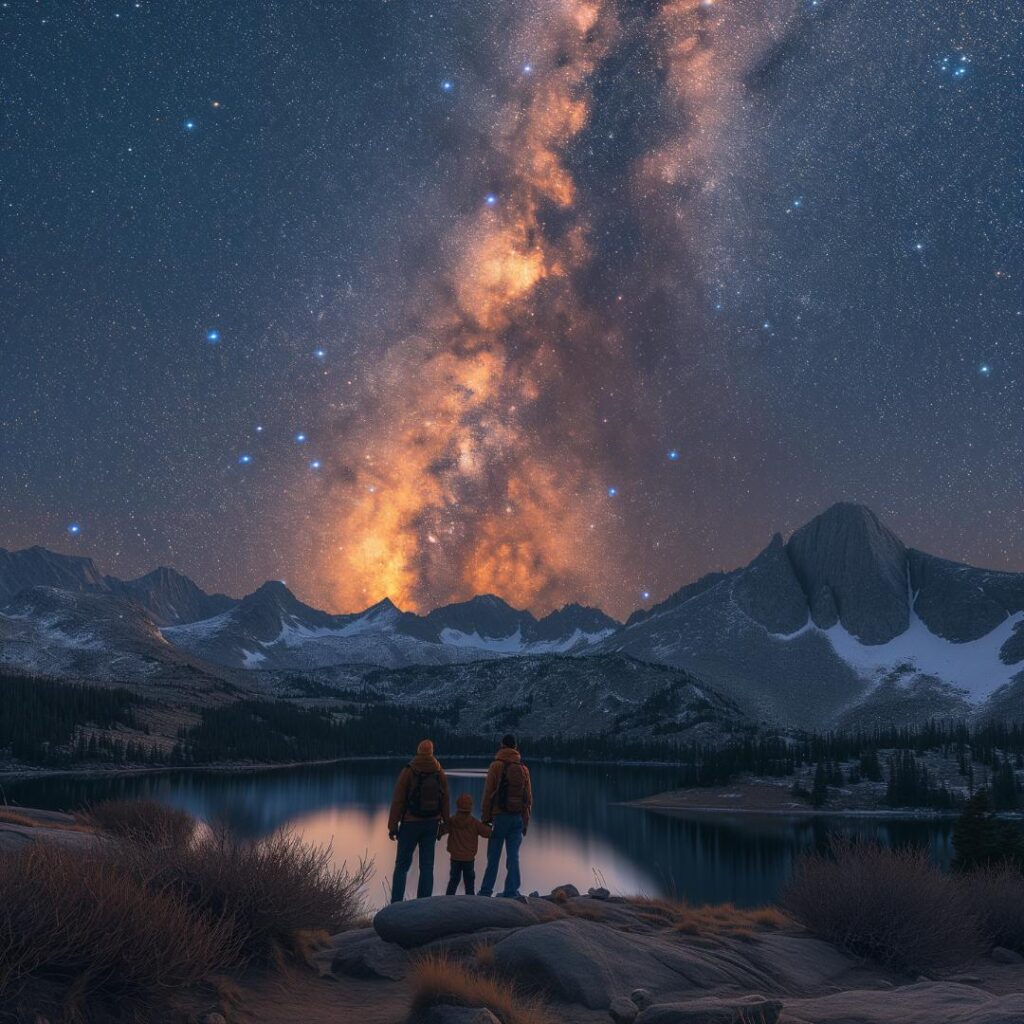
Welcome to the enchanting world of dusk and dawn—where the trails offer a different kind of awe reserved for those seeking adventure under the night’s cloak.
Here at Explore Montana Outdoors, we understand the unique allure of starting your hike under a tapestry of stars or wrapping up as the first rays of sunlight kiss the horizon.
If you’re planning a night hike to catch a breathtaking sunrise or sunset, it’s essential to prioritize safety and preparation.
Take your time with selecting a familiar trail, planning your route meticulously, and packing reliable gear that can withstand the challenges of the dark.
Remember that the trail looks different at night, and surprises can range from unexpected weather changes to wildlife encounters. So, stay alert, make noise, and keep your eyes peeled for reflective eyes.
And most importantly, trust your instincts and be ready to turn back if you feel uneasy. With these assertive night hiking tips in mind, you’ll be on your way to experiencing the tranquility and challenge of hiking in the dark while staying safe. Night Hiking
| Item | Purpose | Importance Rating (1-5) |
| Headlamp | Primary source of light to navigate trails and ensure visibility. | 5 |
| Extra Batteries/Power Bank | Ensures your headlamp and other electronic devices remain powered throughout the hike. | 5 |
| GPS Tracker or Compass | Helps with navigation, especially in areas where trails are not well-marked. | 5 |
| Sturdy Boots | Provides necessary support and traction on uneven or rough terrain. | 5 |
| First Aid Kit | Contains essential supplies for treating minor injuries or emergencies. | 5 |
| Backup Light (Secondary Headlamp or Flashlight) | Serves as a backup in case the primary light source fails. | 4 |
| Reflective Clothing or Gear | Makes the hiker more visible to others, especially in low-light conditions. | 4 |
| Waterproof Clothing/Layers | Protects against unexpected weather changes, keeping the hiker dry and warm. | 4. A |
| Whistle | Can be used for signaling in case of emergency or getting lost. | 3 |
| Snacks and Water | Essential for maintaining energy levels and hydration throughout the hike. | 5 |
Night hikers, gather ’round! Before planning your night hike under the sparkling stars, let’s delve into essential tips to ensure a safe night with unforgettable memories.
Safety is paramount when the sun dips below the horizon. The allure of catching a sunrise or sunset from the peak may be tempting, but proper preparation and gear can quickly become safe.
Select a familiar trail you’ve trekked in daylight from the onset to minimize surprises. Be sure to plan your hike meticulously, accounting for the different challenges that night offers.
Trail conditions alter once dusk settles in, so careful footing is required.
I can’t stress enough how crucial expert advice is; soak up every nugget of wisdom from seasoned night hikers who’ve navigated the trail by the moon’s glow.
They’ll often mention that safety is so central to night hiking it’s worth repeating: safety, safety, and safety again.
Expert comments usually emphasize having redundant safety measures in place. For instance, pack extra batteries for your headlamp and a backup light.
Ah, gear, where would night hikers be without it? You need reliable and tested gear that can withstand the night’s test.
From sturdy boots to a GPS tracker, gear up to confront the night confidently.
Also, it’s wise to remember that night trails demand extra vigilance. Surprises on the trail could range from wildlife encounters to unexpected weather changes, reinforcing the significance of safety.
And in the realm of preparation, there’s never too much emphasis on the word ‘safety.’ Load up on layers and be prepared to tackle the chill that accompanies night hikes.
Remember, a well-planned hike is safe, so take the time to look ahead and make those plans rock-solid. The night awaits eager night hikers with its silent beauty and tranquil air.
So gear up, hit the trail, and most importantly, stay safe while you chase those breathtaking moments at sunrise and sunset.
One crisp autumn evening, we embarked on a night hike under the vast Montana sky, a canvas scattered with countless twinkling stars. With my family by my side, we packed our essentials — headlamps, warm jackets, and a sense of adventure. As we ventured into the wilderness, the day’s noise faded, replaced by the serene silence of nature at night. We turned off our flashlights, allowing our eyes to adjust, and soon, the Milky Way unfolded above us in breathtaking clarity. That night, as we navigated the trails guided by the stars, I shared stories of constellations and the lore behind them, passing on the same wonder and respect for nature that was instilled in me. It wasn’t just a hike; it was a lesson in the beauty of our universe, a reminder of how small yet connected we are to this vast, magnificent cosmos
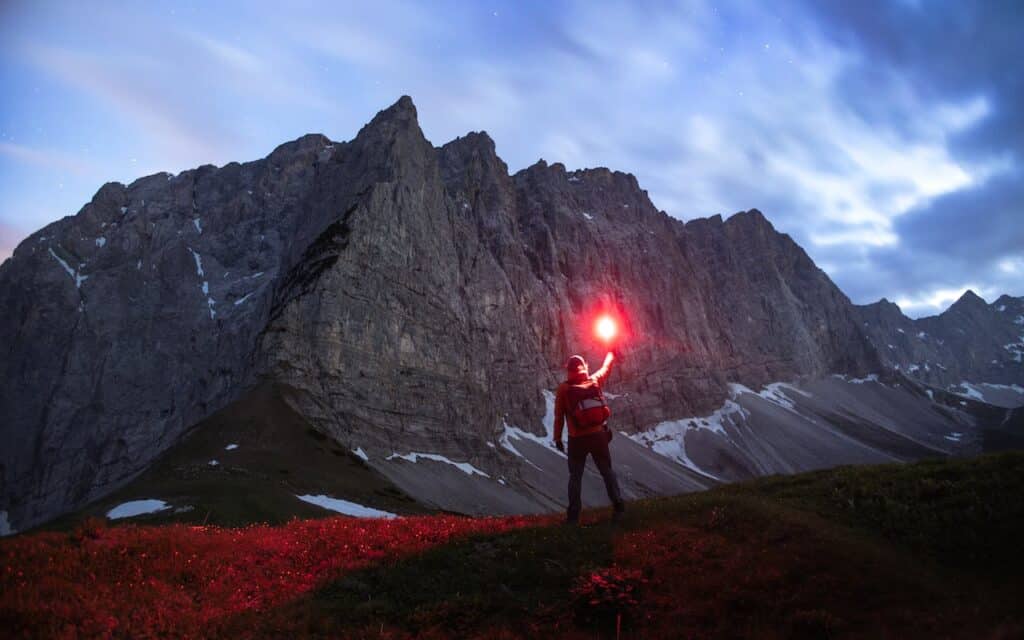
Planning Your Night Hike: Essential Tips to Consider in the Dark
Before you set off on your nocturnal adventure, planning your night hike is crucial to ensure a safe night. The exhilarating experience of hitting the trail in the dark, whether for that breathtaking sunrise or serene sunset, begins with meticulous preparation.
First things first, pick a familiar trail. Your knowledge of the terrain will be your guiding light when the moon and stars are your only companions.
But remember, the trail looks different at night, and familiar landmarks can take on a spooky new guise when the sun dips below the horizon.
Don’t rely on your memory when planning a hike in the twilight hours; review the trail map and recent trip reports for any changes or alerts.
This advice holds even for the seasoned hiker.
Your guide in the dark, literal and figures, will be your trusty headlamp or flashlight, ensuring every step on the trail is surefooted. That beam becomes your safety beacon—keep it shining and always pack spare batteries.
While planning your night hike, remember the wildlife that comes alive as darkness blankets the trail. It’s not just about seeing; it’s about being heard.
Make noise, sing a tune, or simply converse to announce your presence—a polite heads-up to our nocturnal neighbors. Keep your eyes peeled for reflective eyes, and stay calm if you encounter an animal; remember, they’re more scared of you.
Hiking at night requires you to embrace all your senses. The trail can be a different beast in the black of night, so trust your instincts, and if you’re feeling uneasy, it’s okay to turn back.
I completely agree that night hiking can be a unique and enchanting experience. However, it’s crucial to prioritize safety by following the essential tips and proper preparation mentioned earlier. By doing so, you can enjoy the breathtaking views and peaceful solitude under a starlit sky without any worries. So, plan that night hike, but remember to stay safe and prepared!
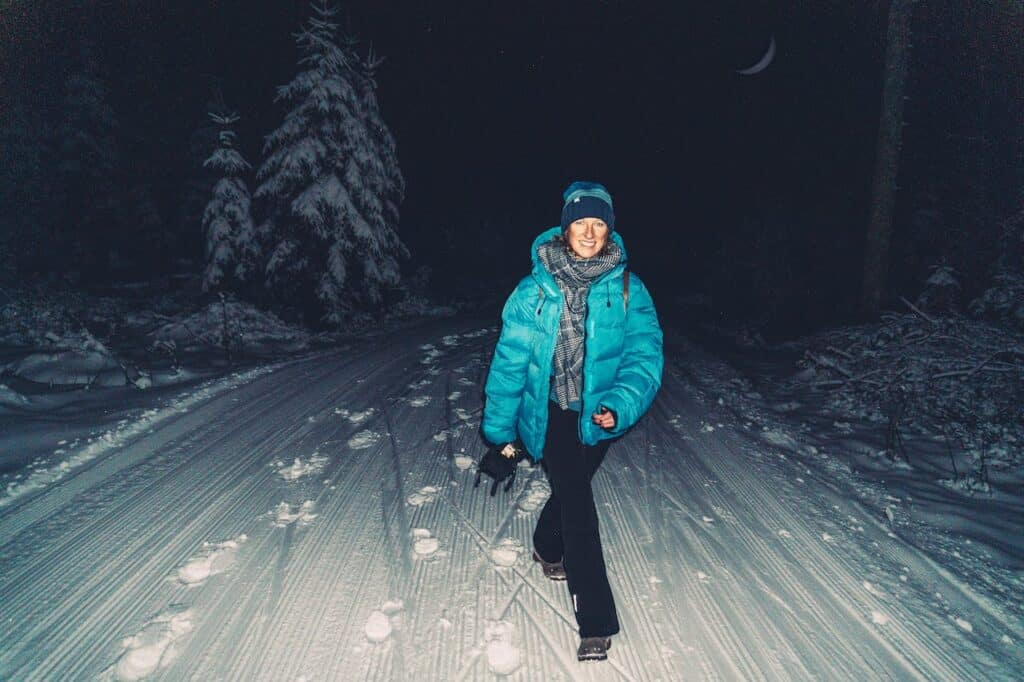
Embracing the solitude and serenity of a night hike can lead to some of the most profound outdoor experiences, especially if you’re heading out to catch a glorious sunrise or sunset. But venturing into the darkness brings unique challenges that demand respect and preparation.
Expert comments reinforce the importance of safety when planning for a hike under the stars. The right gear is your first line of defense against the unpredictability of night hiking.
Illumination is a game-changer; the night’s darkness is not just an inconvenience without it. It’s a hazard. Headlamps, backup flashlights, and even glow sticks should be non-negotiable items on your packing list.
The importance of finely tuned skills can’t be overstated—navigational know-how becomes paramount once the sun dips below the horizon. Brush up on your map reading and compass skills, or ensure your GPS device is fully charged and operational.
Knowledge and preparation are your allies when the trail ahead is cloaked in night’s cloak. Moreover, when you’re nocturnally active, health considerations like adjusting your eyes to the dark and staying hydrated and energized become crucial.
Safety again surfaces as a critical component when discussing the timing of a night hike. Start early enough to not rush through the darkness, increasing the risk of injury or getting lost.
Expert advice often points to the golden rule of hiking: let someone know where you’re going and when you expect to return. It’s a fundamental yet lifesaving piece of advice.
Regarding night hiking safety, taking heed of expert advice and investing in the right gear can make all the difference. Information on local wildlife, weather patterns, and trail conditions should be gathered and assessed before you set out, alongside prepping your gear and skills.
Armed with the proper knowledge, your night hike can be a memorable adventure that safely brings you to witness the splendor of dawn or dusk in the wild. So gear up, get informed, and step confidently into the night, knowing you’re well-prepared for the journey ahead.
| Feature | Description | Note/Tip |
| Positioning on Head | – Side and front view illustration<br>- Positioned just above the eyebrows | Illuminates path ahead and peripheral areas |
| Angle Adjustment | – Angled slightly downwards towards the trail<br>- Adjustable angle indicator shown | Avoids blinding oncoming hikers, better illuminates path |
| Red Light Setting | – Switch or button to change light from white to red | “Use red light to preserve night vision and for map reading.” |
| Intensity Settings | – Adjustable intensity dial or button | “Adjust brightness to conserve battery life and reduce glare.” |
| Snug Fit | – Illustration of head strap adjusted to be snug but comfortable | Ensures headlamp doesn’t slip during movement |
| Battery Replacement | – Open compartment showing battery location | “Always carry spare batteries. Ensure they are inserted correctly according to the +/- indicators.” |
Embarking on a night hike can be an exhilarating way to experience the trails in a new light, or rather, the magic of the absence of it. However, your night vision needs to be top-notch to fully embrace the wonders of the dark.
Let’s delve into some essential night hiking tips that harness the power of your peripheral vision and other trade tricks to ensure you’re not left in the dark – literally. While the sun dips below the horizon, it’s crucial to understand that your night vision capabilities are remarkable. With a few adjustments, you can enhance your sight significantly during your nighttime adventures.
For starters, allow your eyes ample time to adjust to the low-light conditions. This adaptation can amplify your night vision significantly, providing a more transparent, luminescent view of the trail ahead.
Resist the urge to flick on your headlamp at the first sign of dusk. Instead, rely on the natural ambient light, which could provide enough illumination to navigate without impeding your night vision adaptation.
Also, it’s essential to understand that using your headlamp too often can thwart your eyes’ effort to adapt to the dark. If you need to operate your headlamp, opt for a red-light setting.
The red light is far friendlier to your night vision than a blinding white beam that can reset your eyes’ adjustment process.
As you hike under the blanket of night, remember to use your peripheral vision. This part of your vision is more sensitive to light and movement, which can be a game-changer while trekking in darker conditions.
Shift your gaze slightly away from objects you want to see—this technique maximizes the use of your peripheral vision and enhances your ability to detect the lay of the land. Furthermore, always keep your headlamp’s light at a lower intensity to maintain night vision and save on battery life.
A dimmer light often suffices and helps keep the natural ambiance of the night intact. Moreover, when scanning the path before you, use bouncing or scanning movements with your light to avoid steady light blindness.
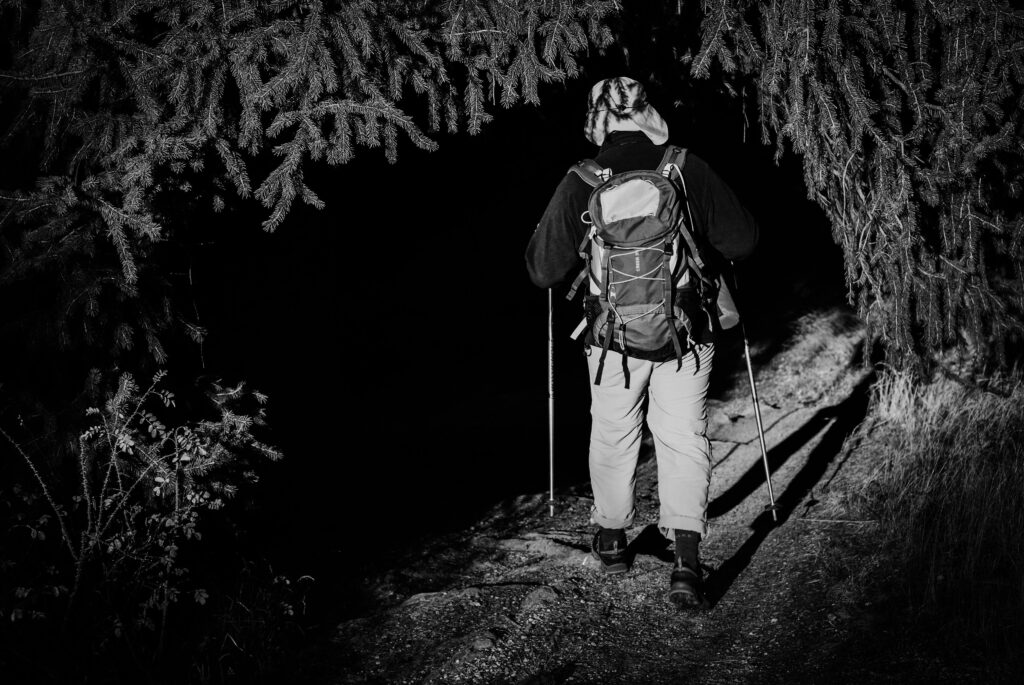
Tapping into these night vision techniques will make your night hike a more profound experience. Remember, at Explore Montana Outdoors, we’re here to help illuminate your adventure path, whether under the sun’s glow or the star’s twinkle.
Keep these tips in mind, and you’ll find that night hiking can transform the familiar trails into a **mesmerizing** dance with the shadows, inviting both challenge and wonder into your trek.
Embrace the **darkness**, treasure the stillness, and let your sharpened night vision lead the way to those glorious sunrise and sunset destinations.
Embarking on a trail adventure at night can be an exhilarating experience, but it’s imperative to prioritize night hiking safety. As we delve into expert comments on how to stay safe, it’s clear that preparation and caution are the linchpins of a successful night-time trek.
The allure of witnessing a stunning sunrise or sunset from the peak is enticing but keeps the excitement from eclipsing the importance of safety. Our expert advice starts with a simple yet crucial tip: never compromise your visibility.
Having a reliable source of light is non-negotiable for safe night escapades.
Planning your night hike with meticulous attention to detail can make all the difference. Experts agree that selecting a familiar trail for your nocturnal outing reduces the risk of getting lost.
Absolutely! If you’re a first-timer, it’s even more important to prioritize safety and proper preparation when night hiking. Be sure to select a familiar trail, plan your route meticulously, pack reliable gear, and stay vigilant on the trail.
Remember that the night offers different challenges, and surprises can range from unexpected weather changes to wildlife encounters.
But with the right mindset and preparation, you can enjoy the unique and enchanting experience of hiking in the dark… Additionally, hike in groups to bolster overall safety and ensure there’s assistance readily available in case of any mishaps.
Another critical piece of expert advice involves weather-watching; abrupt changes can transform a tranquil night into a precarious situation, so stay updated on the forecast.
In night hiking safety, your gear is your guardian. Ensure you have the essentials discussed earlier in “Night Hiking Tips: Essentials for a Safe Night on the Trail.
” Proper footwear, a first aid kit, adequate water, and additional layers can be game-changers, instilling confidence to navigate the trail at night safely. Experts often underscore the virtue of being over-prepared rather than under-prepared.
Your kit should include items previously mentioned under “The Ultimate Guide to Night Hiking Safety: Tips and Comments from the Experts.
Finally, sharpening your senses plays a magnificent role in safety on the trail after dark. Tips for enhanced sight during night hiking discussed in “Maximize Your Night Vision: Tips for Enhanced Sight During Night Hiking” should be adopted to ensure you’re as vigilant as possible.
Sound becomes your ally in the hush of night, enhancing your perception of the environment. Remember, safe night hiking demands respect for the elements and a comprehensive understanding of the dynamics of the wilderness at night.
By heeding this expert advice, adventurers can immerse themselves in the serenity of nature’s nocturne while maintaining paramount safety.
Zamberlan - 1996 VIOZ lux GTX rr - Leather Backcountry Boots - Waxed Brick - 8
The Zamberlan Vioz GTX Backpacking Boot is perfect for anyone who loves to explore the great outdoors. Crafted in Italy by expert boot makers, this boot features a Hydrobloc full-grain leather upper, a GORE-TEX Performance Comfort liner, and a high-traction Vibram 3D sole, ensuring that your footwear is up to the challenge wherever the trail may lead. So whether you're trekking through the Dolomites or exploring the vast wilderness of Denali, the Zamberlan Vioz GT Boot is the perfect companion.
Details
Globally loved boot for backpacking in rugged, steep terrain
Hydrobloc full-grain leather upper for increased protection
GORE-TEX technology provides waterproof and breathable protection
ZCS system uses shock-absorbing materials for cushioned stability
Zamberlan Flex system adds lateral support while flexing naturally
Rockered toe profile lends an improved walking action
Zamberlan Vibram 3D sole offers traction and durability on the trail
Handmade in Italy with attention given to detail and high quality
Enter the Asolo Men's TPS 520 GV Evo Backpacking Boot. Made with a waterproof, breathable GORE-TEX membrane, this boot will keep your feet dry no matter what the weather throws your way. The durable, full-grain leather upper is built to last, while the Asolo/Vibram rubber outsole offers maximum performance and traction on all types of terrain. With three shock absorbers that correspond with the areas of the foot that receive the highest impact during activity, this boot is designed to keep you comfortable on even the longest hikes. So lace up a pair of the Asolo Men's TPS 520 GV Evo Backpacking Boot and hit the trail with confidence.
Details
Classic full-grain leather backpacking boot
Leather uppers offer protection and weather resistance
GORE-TEX provides waterproof and breathable comfort
PU midsoles provide firm, durable, and supportive cushioning
Leather ankle collars provide ankle support
Stiff soles with torsional rigidity for lateral support
This model can be resoled
| Item | Description | Why It’s Essential |
| Headlamp (with Red Light Setting) | A headlamp is crucial for visibility; the red light setting helps preserve night vision. | Ensures safe navigation without compromising night vision. |
| Extra Batteries/Power Bank | For powering your headlamp and other electronic devices. | Prevents being left in the dark due to power loss. |
| Reflective Clothing/Gear | Clothes or gear with reflective strips enhance visibility to others. | Increases safety by making you more visible to others on the trail. |
| Trail Map and Compass/GPS | Essential for navigation, especially on less familiar trails. | Helps prevent getting lost in the dark. |
| First Aid Kit | Basic supplies for treating minor injuries. | Critical for addressing injuries promptly. |
| Water and Snacks | Hydration and energy are crucial, especially during physical activity. | Keeps energy levels up and prevents dehydration. |
| Warm Clothing and Layers | Temperatures can drop significantly at night. | Keeps you warm and protects against the cold. |
| Emergency Whistle | A loud whistle can be used for signaling in case of emergency. | An effective way to signal for help if you’re in trouble. |
| Mobile Phone | For emergency communication and navigation assistance. | Essential for calling for help and using GPS in emergencies. |
| Backup Light Source | An additional flashlight or headlamp as a backup. | Provides light in case the primary source fails. |
As night hikers, it’s essential to pre-plan and gear up correctly to ensure a safe and enjoyable experience while traversing trails in the dark. To help you navigate the nocturnal landscape, I’ve compiled a list of indispensable items that will light your way and keep those surprises to a minimum.
The most crucial piece of gear is, without a doubt, a reliable headlamp. While embarking on any night hike, it’s not just about having a headlamp; it’s about having a headlamp that won’t leave you in the lurch.
So, toss in some extra batteries because there’s nothing quite like the tranquility of a night hike—unless the avoidable frustration of a dimming light punctuates it.
Night hiking is truly a unique adventure, and your gear list should reflect the specific needs of dark hiking. The dark distorts distance and depth, so don’t spare any detail when preparing for a night hike.
A headlamp with a red light option can be handy for maintaining your night vision. Speaking of which, enhanced sight is vital during dark excursions.
To maximize your night vision, allow your eyes to adjust to the dark for at least 20 to 30 minutes before hitting the trail. The difference it makes can be astounding, as your sensitivity to the nuances of the dark will improve significantly.



Safety is paramount; keeping those essentials close is a smart strategy for planning your night hike. Ensure you’re decked out with the appropriate gear for the forecasted conditions.
Remember, what you wear can be as critical as what you carry. Even in the dark, ensure you are visible—reflective strips and bright colors aren’t just for daytime adventures!
And, of course, remember to pack extra layers. The temperature often drops after sunset. Hence, carrying extra gear to stay warm is a no-brainer.
To wrap it up, embarking on a night hiking adventure requires thoughtful preparation and an extra emphasis on safety. From choosing the right headlamp to packing your gear smartly, each step is crucial in creating an unforgettable experience.
So, as you set out under the starry sky, embrace the stillness, relish the unique beauty of a sunrise or sunset, and, most importantly, hike confidently, knowing that you’re ready for the trails ahead.
<image: your image file link here>
When dusk shrouds the sky, the ancient thrill of trekking under a blanket of stars beckons the adventurous soul. But before you embark on dark hiking, selecting the appropriate trail that aligns with your nighttime aspirations and skill set is wise.
Opt for a familiar trail you’ve wandered upon beneath the sun’s gaze. It’ll provide a silent reassurance in the moon’s soft glow and minimize unwelcome surprises.
You’ll want to ensure the chosen trail has clear markings—vital for those hikes through the night when even the most familiar path can seem strange.
Immerse yourself in the serene stillness of the night, but remember, darkness cloaks the details of your terrain, and your night vision will need to adapt. A skillful hiker knows that relying on their sight alone is insufficient when dark envelops every bend.
Therefore, arm yourself with a trusty GPS and a comprehensive guide to the trail. It’s advice well-heeded for beginners and experts alike—those sage words of guidance can anchor you in the untamed dark.
Night hiking isn’t just about reaching the peak to witness the sunrise or bidding the day farewell under vivid sunsets. It’s about feeling alive in the hush that the dark brings, enhancing skills you might only call upon when the sun dips below the horizon.
But let’s be clear—respecting the night and its inherent risks is essential, like any other wilderness aspect.
Equip yourself with knowledge—the ultimate guide to night hiking safety is more than a footnote; it’s a lifeline. From there, maximize your night vision with tips for enhanced sight, enabling a clear understanding of the trail ahead.
Maintain safety on night trails through what you carry and the wisdom gathered from experts who have voyaged countless times into the dark.
Embarking on a night hike can be an exhilarating experience, especially when your goal is to catch a breathtaking sunrise or a tranquil sunset. As you plan your night hike, it’s crucial to tap into the collective wisdom of seasoned trekkers.
These individuals have turned their night hiking escapades into fine art, and their expert comments and advice are invaluable resources for anyone looking to venture into the nocturnal wilderness. Planning your night hike involves a fair share of prep work, and each detail can make a difference between an unforgettable journey and a tale of caution.
Through carefully reading night hike guides and heeding advice from seasoned trekkers, night hikers can amass a wealth of information essential for navigating the darkness safely.
From picking the perfect trail to knowing how to maximize your night vision, the communal guidance from veteran night hikers underscores every aspect of your trek. When it comes to the essentials for a safe night on the trail, it’s not just about what you bring but also about how you use your gear and skills to maintain safety on night trails.
One crucial tip from experienced guides is to prioritize your sight during night hiking by allowing your eyes to adjust to the darkness and minimizing artificial light sources. All this well-rounded advice can help you plan hikes that are not only safe but also highly rewarding.
The experiences shared by trekkers can help newcomers avoid common pitfalls and enhance their night hike planning with real-world insights. Collecting comments and integrating tips from various trekkers into your plan allows for a more informed and enjoyable hike.
As dusk turns to night, your preparedness, influenced by the accounts of seasoned trekkers, transforms the night into your playground. So gear up, embrace the guidance from those who’ve tread before you, and make your night under the stars an adventure to remember with Explore Montana Outdoors.
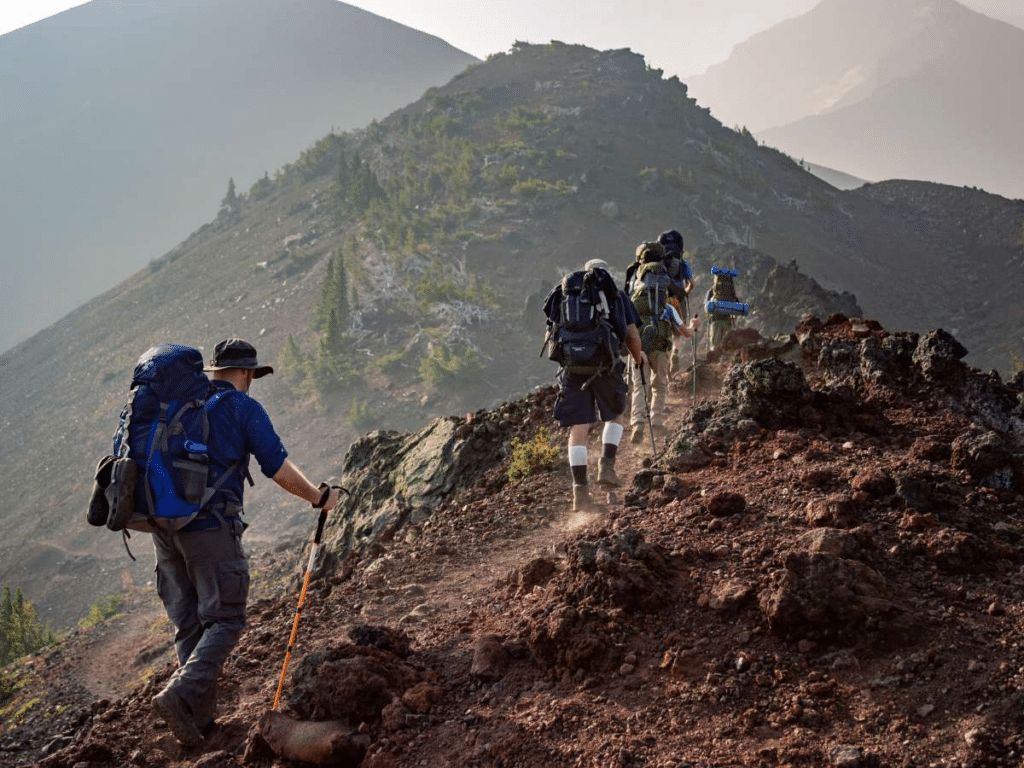
When the sun dips below the horizon and you’re gearing up for a night hiking expedition, having the best night hiking lights isn’t just a convenience—it’s a necessity. As darkness envelops the trails, a reliable headlamp becomes an extension of your senses, creating a safe passage through the inky blackness.
Picture yourself; you’ve planned meticulously for a picture-perfect sunrise hike, and your headlamp must be up to the task. It’s all about that snug fit, robust battery life, and luminosity that easily cuts through the cloak of night.
As night hiking enthusiasts, we’ve harvested years of experience to compile these tips, ensuring each step you take is guided safely under the moon’s watchful gaze. Lighting is a non-negotiable element when preparing for an evening trek, and a headlamp, emitting an intense, steady light, is a hiker’s best friend.
Consider brightness levels and beam distance; this light reveals the unseen, from lurking roots to vague trail markers.
Remember, while the headlamp is your primary light source, redundant light sources can be a godsend. Pack an extra light or two—compact hand-held devices or an additional headlamp—as part of your essential gear.
This night hiking tip isn’t just about visibility; it’s your lifeline should your leading light fail mid-expedition.
It’s crucial to move cautiously when hiking at night. While your headlamp or flashlight will illuminate your immediate vicinity, it can’t predict the terrain. This is why staying alert and watching your step is crucial, especially if the trail is rocky or uneven. By being mindful of your surroundings and taking your time, you can avoid potential hazards and safely make it to your destination.
Study your route during daylight and align those insights with your night hiking adventure for a seamless experience. And let’s not overlook the minor details in our tips—like angling your headlamp slightly downward to optimize your night vision and prevent fleeting blindness from the sudden contrasts of light and dark.
Night hiking opens up a whole new dimension of outdoor experience, one where each headlamp beam leads you closer to the awe-inspiring hues of a waking horizon. It’s an adventure that reminds us, with just the right tips and the best light, that the night trails of Explore Montana Outdoors are simply the prelude to nature’s most dramatic performances.
So, secure that headlamp, follow these night hiking tips, and reclaim the night with confidence and awe!
As we wrap up our nocturnal adventure guide, remember that night hiking is an exhilarating way to engage with nature and catch those breathtaking sunrises and sunsets. With the proper preparation, a keen awareness of your surroundings, and respect for the wilderness, you can safely enjoy the unique serenity of these trails after dark.
So, lace up your boots, grab your headlamp, and let Explore Montana Outdoors guide you through the stars to the most awe-inspiring views. Here’s to discovering the magic of the night, one step at a time.
Happy trails!
Additional reading of an article on kevmrc.com highlights the allure and practical considerations of night hiking. It suggests that night hiking offers a transformative experience, providing a new perspective on familiar landscapes and the chance to see wildlife and stars in a different light. The article emphasizes the importance of preparation, such as knowing the trail, planning according to moon cycles, and bringing the right equipment to safely enjoy the unique beauty of hiking under the stars


The Montana Style is a participant in the Amazon Services LLC Associates Program, an affiliate advertising program designed to provide a means for sites to earn advertising fees by advertising and linking to Amazon.com
To learn more about Trevor Riggs, please visit our About page.
The Montana Style is a participant in the Amazon Services LLC Associates Program, an affiliate advertising program designed to provide a means for sites to earn advertising fees by advertising and linking to Amazon.com